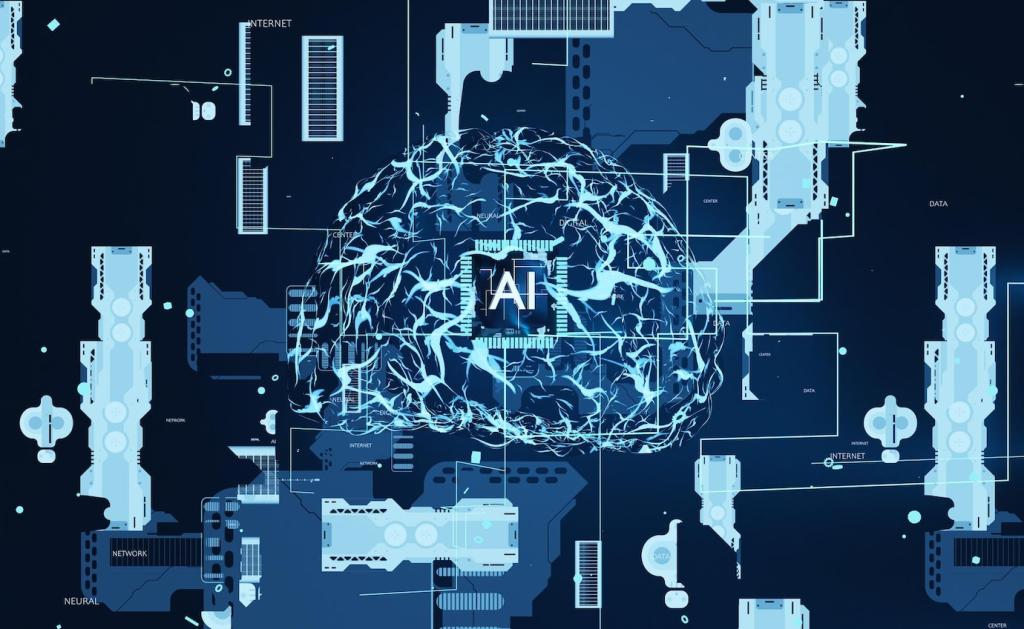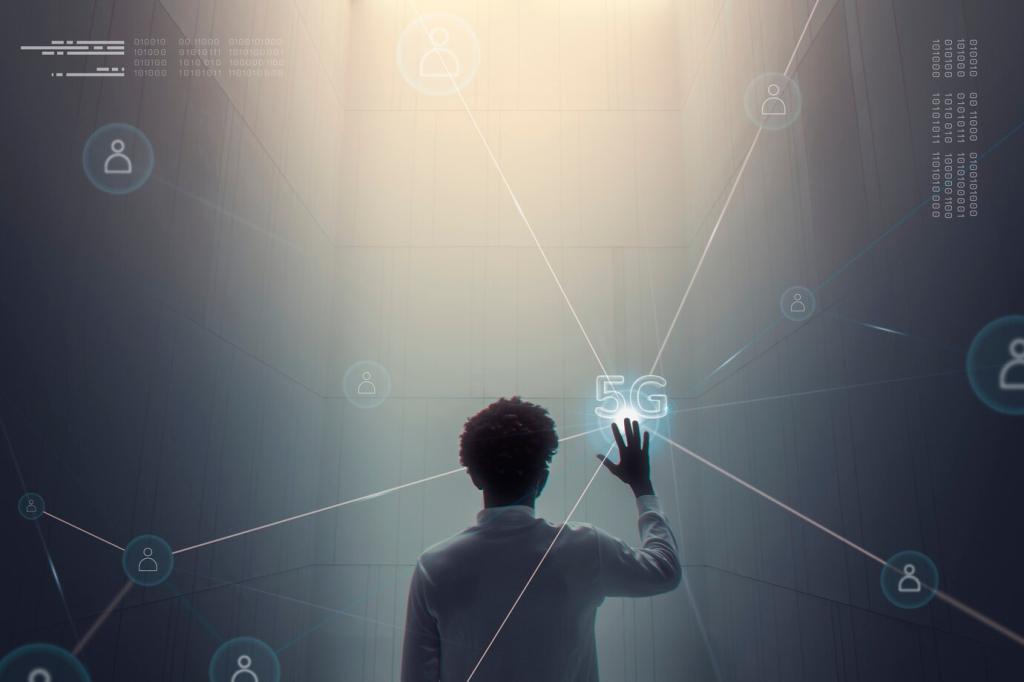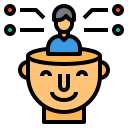
The Evolution of Art in the Age of AI
The landscape of artistic expression is undergoing a profound transformation as artificial intelligence becomes an ever more powerful creative force. From the earliest digital experiments to the latest AI-generated masterpieces, art has expanded beyond traditional boundaries, blending human imagination with computational innovation. This ongoing evolution raises questions about creativity, originality, and the future of artistic collaboration. In this exploration, we delve into the myriad ways AI is shaping art, examining its impact on artistic techniques, philosophical debates, and the broader cultural conversation.
The Historical Context of Artistic Evolution
Early Innovations in Artistic Tools
Historically, the development of new tools has always reshaped artistic processes. From the introduction of oil paints to the camera obscura, artists have embraced innovation to expand their possibilities. The arrival of computers and digital technology in the twentieth century continued this trend, allowing artists to manipulate pixels, sounds, and animations with unprecedented ease. Each leap introduced unique challenges and opportunities, forcing artists to reconsider established methods while inspiring entirely new genres. The groundwork laid by previous revolutions set the stage for the seamless integration of artificial intelligence, building upon centuries of technological collaboration and creative adaptation.
The Digital Age and Its Impact on Creativity
The digital era dramatically altered the way art was produced and shared. Artists were granted tools that enabled complex simulations, intricate digital painting, and global dissemination through online platforms. Creativity was no longer confined to physical materials or local audiences. Artists could now collaborate across continents, experiment with generative algorithms, and instantly adapt their work for new media. This expansion of possibilities also initiated debates about what constitutes “authentic” art. The introduction of artificial intelligence to this environment represents an evolutionary step, drawing a direct line from digitization to deep learning and machine-generated creativity.
Bridging Tradition and Innovation
The relationship between tradition and technological progress has always driven artistic evolution. Contemporary artists find themselves at the intersection of classical techniques and emergent AI tools, compelled to forge connections between past and future. AI offers a bridge, enabling exploration of stylistic hybrids and reinterpretation of historical works through new lenses. Rather than supplanting established forms, AI invigorates them, providing artists with transformative possibilities. This ongoing dialogue between tradition and innovation ensures that the evolution of art remains a dynamic process, responsive to both heritage and the relentless pace of technological change.
AI as a Creative Collaborator
Visual artists have begun to embrace AI algorithms as dynamic tools and collaborators. By training neural networks on vast collections of images, artists can coax machines to generate original compositions, textures, and color schemes that might elude human intuition. These collaborations often blur the distinction between artist and tool, as machine learning models contribute unpredictable insights. The artist, rather than surrendering control, guides and curates the output, treating AI as a responsive creative partner. The result is a new kind of authorship—one that reflects both human intent and computational possibility. This partnership continues to evolve, inspiring artists to explore territories that transcend traditional boundaries of medium and technique.
The integration of AI into music composition has opened doors to innovative soundscapes and novel creative processes. Through deep learning models, machines can now analyze expansive musical corpora and generate compositions that blend genres, scales, and rhythms in previously unimagined ways. Musicians have begun using AI not as a replacement, but as an improvisational companion, sparking ideas and expanding their own musical vocabulary. The AI-generated fragments become seeds for new works, while the human artist shapes and refines them into cohesive expressions. This dynamic interplay not only democratizes composition but also endlessly redefines the sonic landscape, allowing music to grow in tandem with technological capability.
Writers are harnessing AI-driven text generators to co-create stories, poems, and scripts with remarkable efficiency and creativity. By inputting prompts or themes, authors can receive narrative suggestions, stylistic variations, and even entire drafts. Far from diluting literary artistry, this collaboration often catalyzes fresh ideas and challenges conventional storytelling structures. Human writers remain integral—editing, contextualizing, and imbuing AI-generated prose with meaning and nuance. As AI continues to evolve, the division between authorship and collaboration grows increasingly nuanced, inviting both creators and readers to reconsider the definition of narrative innovation in the modern era.
Redefining Originality and Authorship
The Concept of Originality in AI Art
Originality has always been a cornerstone of artistic valuation, often tied to an artist’s unique vision or style. The advent of AI art complicates this notion, as algorithms generate works that appear both novel and derivative, reflecting patterns gleaned from extensive training data. Critics debate whether AI-generated works possess true originality or simply recombine existing ideas. Some argue that the creative act lies in the selection and curation of algorithmic outputs, shifting the locus of originality to the human artist’s intent and guidance. As AI-generated works proliferate, our understanding of what constitutes originality continues to evolve, adapting to the realities of hybrid creativity.
Authorship and Ownership in the Machine Age
Determining who—and what—owns AI-generated art presents unique challenges. If a machine learning model creates a piece derived from millions of existing works, the question of rightful authorship arises. Legal systems worldwide grapple with issues of copyright and intellectual property, seeking to balance the rights of human creators, the developers of AI systems, and the public. Some advocate for recognizing human creators as copyright holders if they play a significant shaping or curatorial role, while others call for new frameworks altogether. As AI’s creative capacity grows, these debates are likely to intensify, requiring thoughtful reconsideration of long-held principles of authorship.
The Artist’s Role as Curator and Guide
In the age of AI, the artist often assumes the role of curator, editor, and conceptual guide rather than sole creator. This shift reflects a broader transformation in the creative process, emphasizing vision, intention, and contextualization over manual execution. Artists select training data, tweak model parameters, and choose outputs, shaping the ultimate form and meaning of the artwork. In this collaborative process, the value of the artist’s sensibility becomes paramount, ensuring that even the most technologically mediated works remain grounded in human creativity. This evolving role repositions the artist at the heart of the machine-assisted creative act, forging a new kind of authorship.
The use of neural networks has introduced a new level of abstraction and complexity to art-making. Artists can train these systems to mimic specific styles, generate surreal landscapes, or interpret photographs in unexpected ways. The algorithm becomes both brush and chisel, translating input data into striking visual forms. Unlike traditional tools, neural networks can learn and adapt, offering dynamic feedback that stimulates further innovation. By embracing these methods, artists extend their creative reach, fostering a blending of technical sophistication and artistic intuition that defines the contemporary art landscape.
Expanding the Palette: Techniques and Mediums
Emotional and Psychological Dimensions
01
The Artist’s Emotional Engagement with AI Tools
For many artists, the integration of AI into their creative workflow evokes a mixture of excitement, curiosity, and trepidation. The relinquishing of some degree of control to a machine can be both liberating and unsettling. Artists frequently describe the process as a dialogue or negotiation, where unexpected AI outputs provoke new ideas and deepen engagement with their own creative impulses. This emotional interplay fosters a dynamic environment in which surprise and serendipity become central to artistic discovery, prompting artists to continuously rethink their relationship to their tools and to their own sense of authorship.
02
Audience Reception and Emotional Resonance
The audience’s response to AI-generated art frequently vacillates between fascination and skepticism. Some viewers are captivated by the novelty and technical prowess on display, while others question the profundity and authenticity of works created with or by machines. Emotional resonance, long considered a marker of artistic power, is scrutinized in light of AI’s algorithmic origins. Nonetheless, instances abound where machine-generated art has elicited deep emotional responses, suggesting that the power of art to move and connect transcends its method of creation. This complexity adds layers to the experience of art, inviting reflection on the evolving mechanisms of emotional engagement.
03
The Psychology of Human-Machine Co-Creation
The psychological dynamics of creating art with AI are intricate and evolving. For some creators, AI serves as a muse or provocateur, stimulating creative risk-taking and alleviating blockages. For others, the presence of a non-human partner raises anxieties about relevance and replacement. The collaborative process demands adaptability and openness, as artists must learn to interpret and respond to outputs that are often unpredictable or strange. This psychological negotiation can lead to profound moments of self-discovery and growth, revealing as much about the human mind as about the technologies at hand. Ultimately, the relationship between artist and AI serves as a unique mirror, reflecting the possibilities and challenges of twenty-first-century creativity.
AI and the Democratization of Art
AI-driven applications and platforms offer intuitive interfaces that simplify complex artistic processes, allowing individuals with little or no formal training to create compelling works. From neural filters that turn photographs into paintings to apps that generate poetry on demand, the accessibility enabled by AI is unprecedented. Aspiring creators can experiment and share their work widely, bypassing traditional gatekeepers of the art world. This lowering of barriers nurtures diverse talent, empowering more people to participate in cultural production and enriching the global artistic landscape.
The widespread availability of AI art tools has facilitated cross-cultural artistic collaborations on an unprecedented scale. Artists from different backgrounds can now jointly experiment with AI platforms, blending techniques, motifs, and sensibilities unique to their cultures. The result is a creative exchange that produces hybrid forms and dialogues, transcending physical and linguistic borders. AI serves as a catalyst for these collaborations, providing common ground in the language of algorithms and data. This expanded network of creators enriches global art, fostering mutual understanding and innovation across cultural divides.
AI’s accessibility has also begun to disrupt established hierarchies within the art world. Curators, critics, and galleries, once the arbiters of taste and legitimacy, are now confronted with a deluge of machine-assisted works from a massively expanded pool of creators. Online platforms and decentralized networks provide alternative pathways for recognition and distribution. This democratization challenges traditional institutions to redefine their roles, adapt their standards, and engage with a broader, more diverse cohort of artists and audiences. The resulting shifts have the potential to make the art world more inclusive and representative than ever before.

The Ethics and Risks of AI in Art
Data Sources and Cultural Appropriation
AI art systems often train on massive datasets of existing works—images, music, literature—scraped from across the internet. This raises questions about consent, copyright, and the legitimacy of drawing upon culturally significant material without appropriate attribution or context. Critics warn that such practices can lead to inadvertent plagiarism, exploitation, or cultural appropriation. As algorithms recombine elements from diverse cultures, the risk of misrepresentation or erasure of meaning looms large. Addressing these concerns demands transparency in data curation and a commitment to respecting the cultural origins and intellectual property of all creative works.
Algorithmic Bias and Representation
Algorithms, like all tools, are shaped by the biases present in their training data. In the context of art, this can lead to systemic underrepresentation of marginalized voices or the perpetuation of stereotypes. Developers and artists must remain vigilant in identifying and mitigating these biases, conscientiously selecting varied training sources and refining models to be more inclusive. The challenge is not merely technical but deeply ethical, requiring ongoing reflection about whose stories are being told—and whose are being overlooked—through AI-generated art. By confronting these issues, creatives can ensure that AI serves to broaden, rather than narrow, the spectrum of artistic expression.
The Use of AI in Misinformation and Deepfakes
Perhaps one of the most pressing risks associated with AI-generated art is its potential misuse in creating fake images, videos, or sound recordings that are difficult to distinguish from authentic works. Deepfakes and related technologies have the power to manipulate public perception, spread misinformation, and erode trust in visual and auditory media. Artists, technologists, and policymakers must grapple with these challenges, advocating for ethical standards, verification tools, and public awareness. Safeguarding the integrity of creative expression requires a collective commitment to transparency and responsibility in the application of AI.
